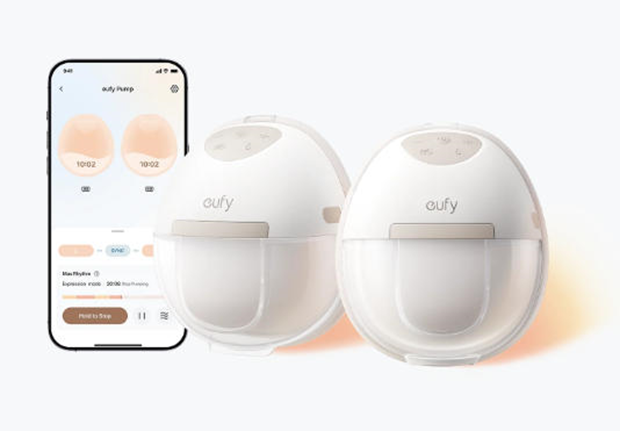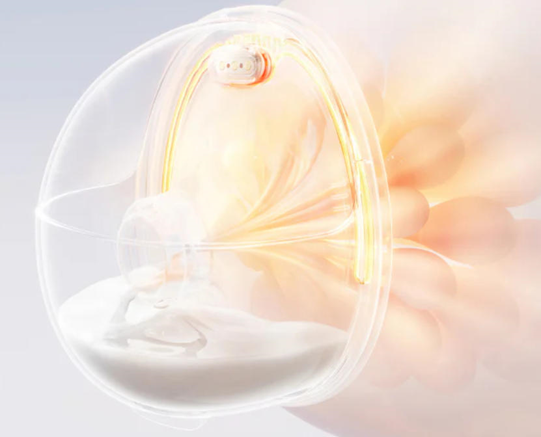Wearable breast pumps offer convenience and flexibility to pumping mothers, but selecting and using the right pump involves key considerations. Ensuring the proper fit enhances comfort and efficiency, while optimal suction levels safeguard against discomfort. Equally crucial is maintaining an impeccable hygiene routine to protect both mother and baby. This guide covers all essential aspects—fit, suction, and hygiene—to help you use your wearable breast pump safely and successfully, supporting your breastfeeding journey with ease and confidence.

Finding the Right Fit for Comfort and Performance
Understanding Breast Shape and Flange Size
Breast shape and flange size dramatically influence pump comfort and efficiency. Flanges that match the breast’s shape allow for optimal milk extraction, minimizing discomfort. It’s vital to measure the nipple correctly, as the flange should provide a slight gap to avoid rubbing. Properly fitted flanges ensure that milk flows effectively and lessen the risk of soreness. Consulting the pump manufacturer’s sizing guide aids in determining the appropriate flange size, ensuring a better pumping experience.
Identifying Fit Issues That Affect Flow
Fit issues can result in inefficient milk flow, causing frustration. If the flange is too large, milk expression diminishes, while a smaller flange may cause pinching and pain. Observe for signs such as persistent nipple soreness, milk spots outside the bottle, or unexplained leaking, as these often indicate fit problems. Adjustments may involve changing flange size or re-evaluating breast shield placement, significantly enhancing milk output and comfort.
Choosing Materials That Feel Comfortable
Material choice impacts comfort—opt for hypoallergenic, soft silicone materials that adapt to your breast shape. Silicone provides a gentle seal and flexibility, reducing skin irritation. Consider the pump’s overall design; seamless components with rounded edges prevent pinching. Lightweight and breathable fabrics in wearable pumps can also improve comfort by allowing air flow and reducing heat build-up during use.
How Suction Strength Impacts Efficiency and Safety
Recognizing Signs of Too Much or Too Little Suction
Effective pumping relies on appropriate suction levels. Too much suction causes pain and can damage breast tissue, while insufficient suction fails to express adequate milk. Warning signs include excessive discomfort, redness, or insufficient milk in the collection bottle. Adjust settings gradually, paying attention to your comfort levels and milk output. Most pumps offer variable settings, allowing customized suction to meet individual needs.
Matching Suction Levels to Milk Flow Patterns
Adjust suction according to your natural milk flow. Start with a low suction to stimulate let-down, increasing gradually for continuous flow. Recognize milk flow patterns and align them with pump settings—some women respond better to different rhythms and intensities. Consider using pumps offering varied cycles to mirror your own breastfeeding pattern, encouraging a more natural and comfortable milk expression.

Avoiding Common Discomforts from Incorrect Pressure
Discomfort often arises from incorrect suction pressure or improperly positioned flanges. Ensure pressure settings reflect your comfort tolerance; start with the lowest effective setting. If you experience discomfort, reposition the flange to center the nipple. Frequent assessment and adaptation of settings can mitigate discomfort, enhance milk extraction, and improve your overall pumping experience.
Building a Clean and Safe Pumping Routine
Daily Cleaning Practices for All Components
Daily cleaning is vital to maintain hygiene and safety in breast pumping. Detach all removable components post-use, rinsing with cool water immediately, followed by sanitization in hot soapy water, ensuring thorough cleaning. Never submerge electrical parts; adhere to manufacturer guidelines. Comprehensive cleaning prevents bacterial accumulation and secures a safe feeding environment for your baby with each use.
Storage Tips to Prevent Contamination
Correct storage techniques help avoid contamination of pump components. Store parts in a clean, dry place, using dedicated containers or bags between uses. Consider storing in a refrigerator between sessions if reuse is immediate, minimizing bacterial growth. When traveling, keep separate storage for clean and used parts, reducing the risk of cross-contamination and maintaining hygiene.
When and How to Sterilize for Extra Protection
Sterilization adds an extra layer of protection. Hospital-grade sterilizers or boiling parts for recommended times can eliminate more bacteria. Sterilize after every few uses or as needed, especially during illness or if components touch non-sterile surfaces. Always follow specific pump instructions, ensuring sterility without damaging parts to maintain their longevity and effectiveness.
Troubleshooting Fit, Flow, and Hygiene Challenges
What to Do If You Experience Leaking or Pain
If leakage or pain occurs, evaluate flange fit and suction settings. Re-adjust flange placement to ensure proper alignment and seal. Alternate suction settings to find one more comfortable. Persistent pain or irritation may suggest the need for a different flange size; consult a lactation specialist if problems continue, addressing any anatomical concerns affecting pump efficacy.
Replacing Worn-Out Parts to Maintain Efficiency
Regularly inspect parts for wear and tear, as worn components compromise efficiency. Check for cracks, warping, or diminished suction in all components. Replacement frequency varies but commonly every few months or if performance declines. Investing in spare parts can assure continuous pump operation, safeguarding your routine and ensuring a consistent milk supply.
Creating a Maintenance Schedule That Works
Develop a maintenance routine by scheduling regular cleanings, check-ups, and part replacements. Set reminders based on usage patterns—frequent users may require more maintenance. Add component checks to your daily routine, and a monthly deep clean and inspection ensures consistent performance. Having a structured schedule aids foresight, preventing unexpected failures.
Conclusion
Mastering wearable breast pump essentials enhances your breastfeeding experience, prioritizing comfort and safety through proper fit, suction, and hygiene. Understanding and adjusting your equipment ensures efficiency and health for both mother and baby. Implement consistent maintenance routines, addressing challenges proactively. By refining these aspects and selecting the best wearable breast pump for your needs, you can maintain an effective, stress-free pumping routine that supports your overall breastfeeding goals, empowering you and ensuring a nurturing start for your little one.
